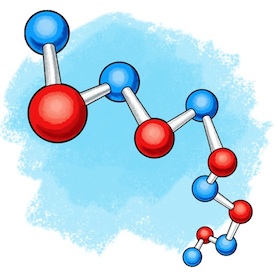
Here are some more points to ponder
-
Plastics are used a lot by doctors and dentists because they are hygienic and will not poison our bodies. Dentists use acrylic to make special white fillings. Can you think of ways that doctors use plastics?
-
Many clothes are made from synthetic fabrics. The fabrics are made from plastic fibres that have been spun out really fine, then made into yarns for knitting or weaving.
-
Plastic fibres are also used to make ropes that are very strong. Fishing lines are made of nylon.
-
Teflon coatings on saucepans and irons are sprayed on as dry powder then baked in a hot oven to make the particles melt together. This is called powder coating and it is also used to put a very tough layer of epoxy or polyester on metal articles like furniture.
-
Many glues are plastics. PVA white glue is a solution of PVA dissolved in water. When it is used to glue two pieces of wood together, the water is soaked up by the wood. The PVA is soaked up with the water. When the water evaporates, the PVA stays behind in the joint, making a strong plastic bridge.
-
Hot melt glue is a thermoplastic. When it is hot it can be squeezed into a joint. When it cools down it goes hard.
-
Other common glues are epoxy, resourcinol, and urea formaldehyde. They are all thermoset plastics made by mixing two chemicals (glue + hardener) to react together. These glues are very important because they are waterproof. They are used to make boats and plywood.
-
Most paints are made from plastic resins. Some, like acrylic house paints and polyurethane varnish are dissolved plastics which dry to form a tough waterproof skin. Other polyurethane, epoxy and polyester paints have to be mixed with a hardener which makes a chemical reaction.
-
Fibreglass resin and automotive body fillers are polyester plastics that you can make yourself with a chemical reaction.


